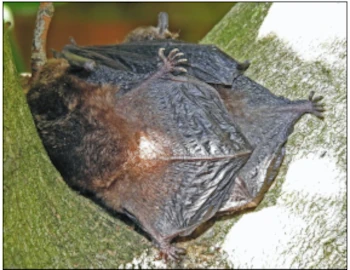We were busy preparing to move into a retirement village. During a working bee in June they needed blankets to protect furniture loaded onto a trailer. Wendy went into our shed and chose an old bedspread. When it was unfolded there was a loud call which demanded me to attend.
A pair of Microbats had been comfortable in the bedspread where they were either in torpor or hibernating until warmer days increased the insect population. They had no problem entering the shed as the back roller door was jammed open.

With this excitement, photos were essential after which Wendy carefully carried them and installed them in a fork of a Blue Berry Ash (Eleocarpus reticulatus). Less than half an hour later they were gone hopefully to a safe spot.
It was a privilege to have the opportunity to photograph these tiny nocturnal animals. While most Australian animals are marsupials microbats like you and me are mammals. Bats are the only mammals capable of flying.
A little more information may be of interest. In winter there are so few insects about that microbats, in cold climates (e.g. southern Australia), save energy by hibernating. They usually choose a cold sheltered place and are able to slow their heart rate and drop their body temperature close to that of their surroundings. They have eyes but navigate to catch insects using sonar, the pitch being higher than the range of human hearing. Microbats weigh up to 30 grams which is the weight of a AA battery.
They certainly are abundant in Beaconsfield and on summer nights they can sometimes be seen flying over shrubs or trees feeding on insects.
![]()